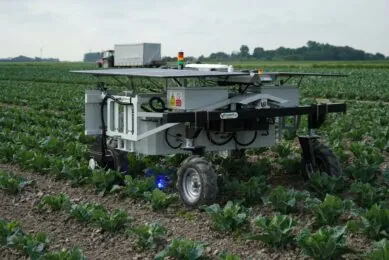‘Maybe use a co-bot until the robot is truly autonomous’

Field robots are not a one-on-one replacement for tractors, says Bram Veldhuisen, Researcher precision agriculture at Wageningen University & Research.
There are many ag-robots for sale. Does this mean you shouldn’t buy a new tractor anymore? I don’t think so, robots are not a one-on-one replacement for tractors. Any farmer knows how to use a tractor. A new one, even when it’s a different type, doesn’t take long to get used to. That’s different with robots, even the ones that look like a tractor.
Operation starts in the office
With a tractor you go to the field and basically start your operation there. With a robot the operation starts in the office, making a plan (or route) along which the robot will operate. You define the field, the GPS guidance line to follow, and all the operational settings.
This might be the hardest thing to do. Do you know all the machine settings in advance? You usually tweak them during the job, changing settings whenever the situation in the field requires it.
Ability to change
This ability to change is something I haven’t seen with robots yet. All require planning the operation from behind your desk. Luckily most allow for minor changes in the field. But, when it starts to drive, you think you can go home because “the robot is autonomous”, right? Then you realise that the robot lacks a system for checking the quality of its work.
What do you do when you see something clogging up the blades? You stop and free up the machine. But robots can’t see this
Hoeing for example looks like a simple operation. If you drive accurately along the crop rows, what could go wrong? Well, quite a lot… What do you, or even a novice operator, do when you see something clogging up the blades? You stop and free up the machine. But robots can’t see this, let alone ‘understand’ what they are seeing. So they will drive on regardless, ripping half of your crop out.
Text continues underneath image
Co-bot instead of an autonomous robot
This doesn’t mean that I think robots are a waste of time and money. It just means that that you shouldn’t buy one as a direct replacement of a tractor. Before investing, you need to consider how you could best use it. I think that for the next few years this doesn’t mean using an autonomous robot, but rather a co-bot, a robot that works in conjunction with a person.
For example a tractor driver does a tillage operation and a light robot does the seeding, no longer compacting the loose soil. Or maybe the tillage is done by a robot as well, and the operator checks both jobs.
Join 17,000+ subscribers
Subscribe to our newsletter to stay updated about all the need-to-know content in the agricultural sector, two times a week.



